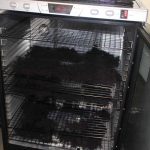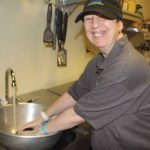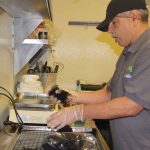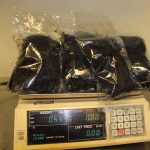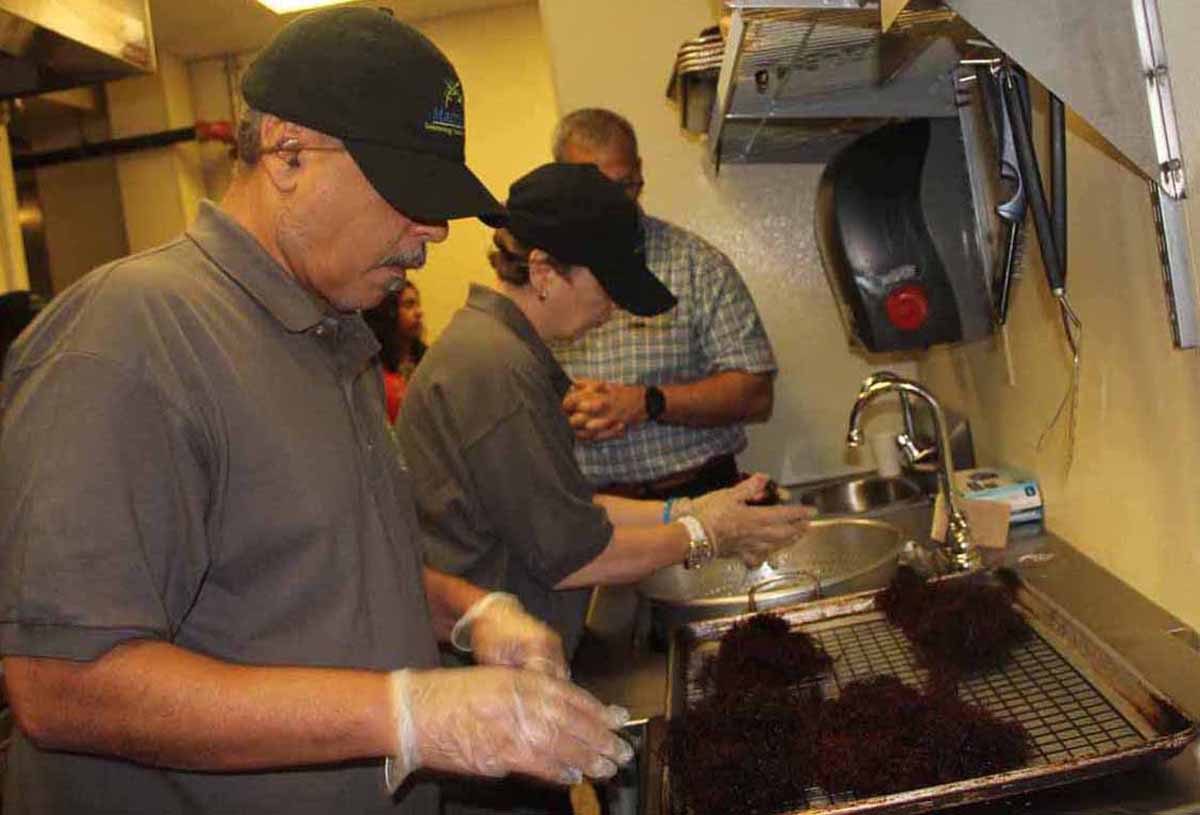
Story and photos by Judy Benson
New Haven – Joseph Sarnelli and Deborah Swetz may not look like pioneers, with their hair nets and plastic gloves, but nonetheless they are part of an effort to bring a new agricultural crop to Connecticut.
Working at stainless steel sinks and counters, the two washed, dehydrated and packaged the dark reddish-brown vegetable in efficient assembly-line fashion that might be found in any commercial kitchen. But the edible product they worked with wouldn’t be found in any other commercial processing facility in Connecticut. And that’s just one of the novel aspects of the project that brought Marrakech Inc., a non-profit agency that works with adults and youth with a range of disabilities and special needs, together with Connecticut Sea Grant.
“It’s very unique,” said Jay Korman, development coordinator for Marrakech, which works with 1,300 individuals in New Haven, Fairfield and Litchfield counties. “This project gave us the opportunity to put people to work in jobs that they find meaningful and enjoyable. And they’re learning new skills.”
The project, which began last year, is an important component of Sea Grant’s efforts to pave the way for Gracilaria, a native edible seaweed, to be grown commercially in Long Island Sound. If successful, it would join the fledgling production of another edible seaweed, kelp, in the estuary.
“The processing piece will help us establish guidelines for the production and processing of this seaweed in Connecticut,” said Anoushka Concepcion, aquaculture extension specialist for Sea Grant. “We’re trying to establish baseline data for the dehydration process.”
A nutritious, fast-growing, stringy plant that can be used in soups, salads and stews, Gracilaria for the project is being grown by the Bridgeport Regional
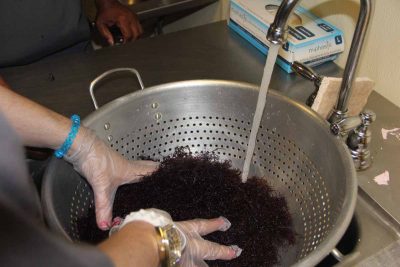
Vocational Aquaculture School, then brought to Marrakech facility in New Haven. After they washed and spread it out on metal racks one morning in July, Sarnelli and Swetz placed it in a commercial dehydrator – basically a low-temperature oven with ample air circulation. The Gracilaria is dried over 23 hours at 110-degrees, emerging as dry, crunchy filaments with most of the vitamins and minerals preserved. It can then be rehydrated for use.
The project, funded by a grant from the National Oceanic and Atmospheric Association, is also working with established shellfish farmers to pilot Gracilaria farming on long lines in the Sound. The seaweed being tested at Marrakech is grown in tanks at the aquaculture school, then dehydrated, packaged and tested at state and private commercial labs for illness-causing bacteria and shelf life. Vibrio, fecal coliform, total coliform and salmonella are the biggest threats, Concepcion said. The testing, she explained, will set a baseline for the public health guidelines commercial farmers would need to follow for crop grown offshore.
“There wasn’t any data on the dehydration process, which is one of the best ways for it to be preserved,” she said. “But the concern is that the dehydration temperatures aren’t high enough to kill pathogens.”
The first year’s worth of testing showed the dehydrated seaweed had no harmful levels of bacteria, indicating the dehydration process is effective at preventing
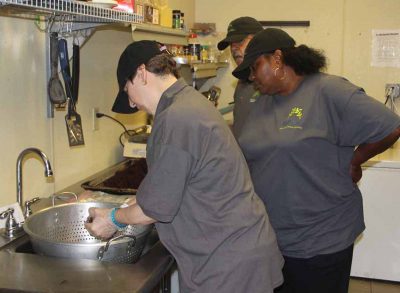
bacterial growth because it removes most of the water needed for the microbes to grow. Concepcion said once this year’s testing concludes in September, she and Nancy Balcom, associate director at Sea Grant who leads seafood safety training programs, will review the data with the state Bureau of Aquaculture.
“Then we can develop guidelines for how to process Gracilaria,” she said.
The partnership with Marrakech that grew out of the project, she said, came about by chance. When the project first began, Sea Grant was working with a company that dehydrated kale. When that company closed, the owner directed Sea Grant to Marrakech because he had worked with the organization in the past and knew they had a commercial kitchen.
“This type of partnership is unique for Sea Grant. They’re not a typical stakeholder for us,” Concepcion said. “But now we’re providing essential job skills for folks who wouldn’t necessarily have had this opportunity.”
Korman said Sarnelli and Swetz spend about four hours every other week doing the dehydration and packaging work, earning a paycheck with funds from the NOAA grant. This project is especially exciting because it’s providing good jobs for people with disabilities – which is often challenging – with a product that could be the start of a new local food source in Connecticut, he said.
“We’re at the beginning of what could become a new meaningful business in Connecticut,” Korman said.
Judy Benson is the communications coordinator at Connecticut Sea Grant.

